In the Winter 1967 issue of Famous Artists magazine, Lorraine Fox, who had recently joined the Guiding Faculty of the Famous Artists School, was interviewed about her career as a professional illustrator. Here in Part 3 of the interview Fox talks about the evolution of her style and her relationship with husband and fellow illustrator, Bernie D'Andrea...
Famous Artists magazine: You have been working on this synthesis [painting and commercial art] for a number of years. Is it a success?
(Below, an example of Lorraine Fox's style at the time of the 1967 interview)

Lorraine Fox: The adjustment has been tremendous. I don't know about success yet. A lot of people look at my work and say, "I can see it's your work." Then someone else will say, "Gee, it's beautiful, but it doesn't look like a Lorraine Fox!" I don't know how he means that but it makes me very happy.
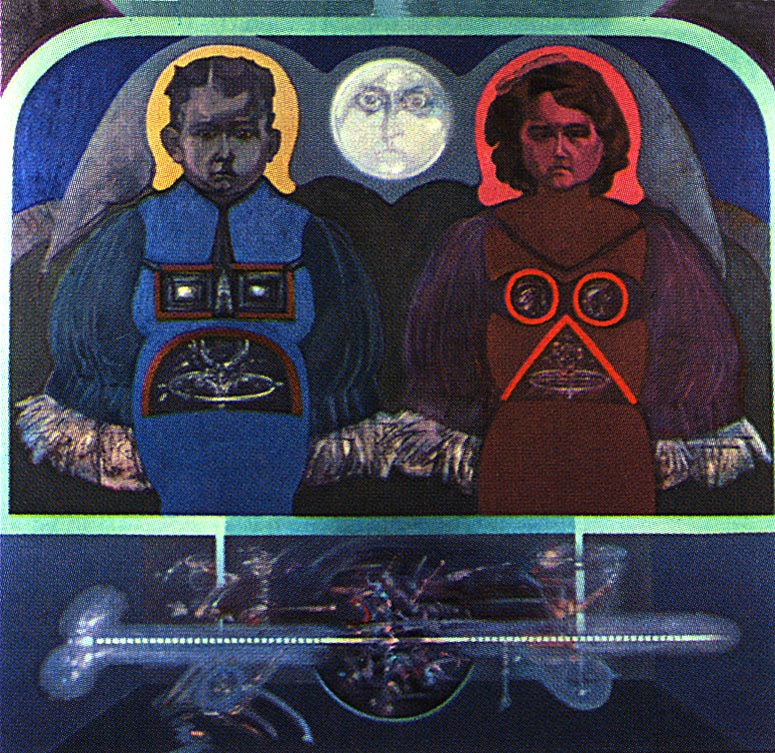
Now I'm painting on my own - landscape painting, figurative painting. I'm getting a direction. People think an artist can sit down and do anything. I can't. I wish I had the ability to cope with three or four things at once but I have to finish one thing before I can start on something else.
(Below, Lorraine Fox children's book illustration from 1966)
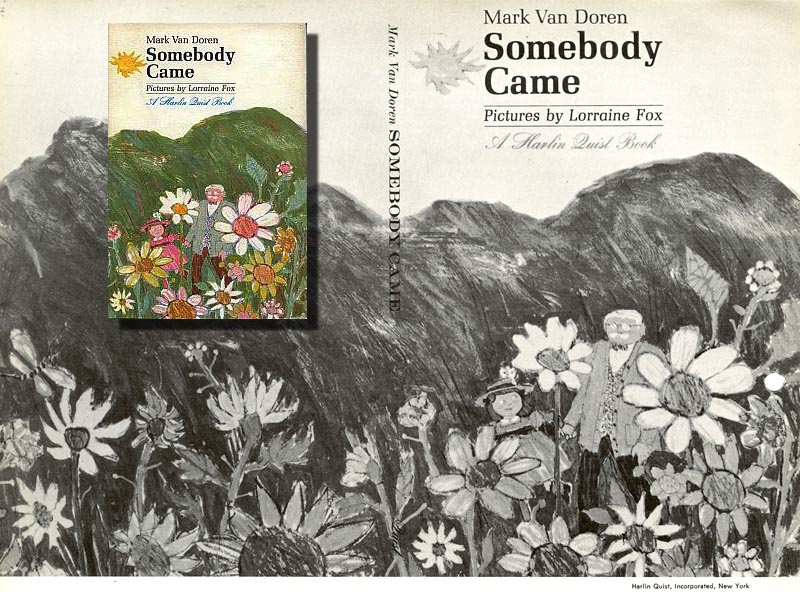
FA: That must make it difficult to free-lance because you are necessarily starting one thing and finishing another as well as lining up work. How long does it take you to do a major illustration?
Fox: Well, the Ladies Home Journal just gave me a month to do a Christmas story illustration.
(Below, a Lorraine Fox Christmas illustration for McCall's from 3 years before this 1967 interview)
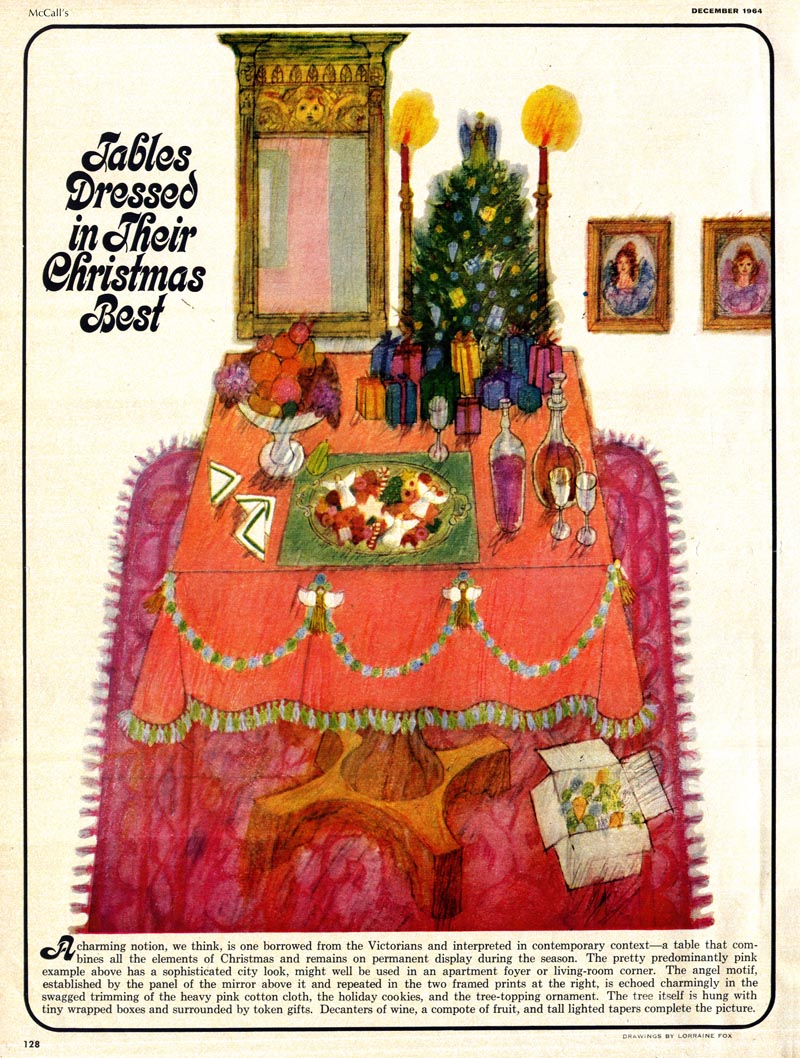
Actually, they ended up by giving me less than a month. it took me a week to do the sketch which showed my concept of the illustration. This involved getting the idea, getting the model. I could have done the finish in a week but it took longer. The concept is right up to today's kind of thinking. The design and technique come out of my paintings.
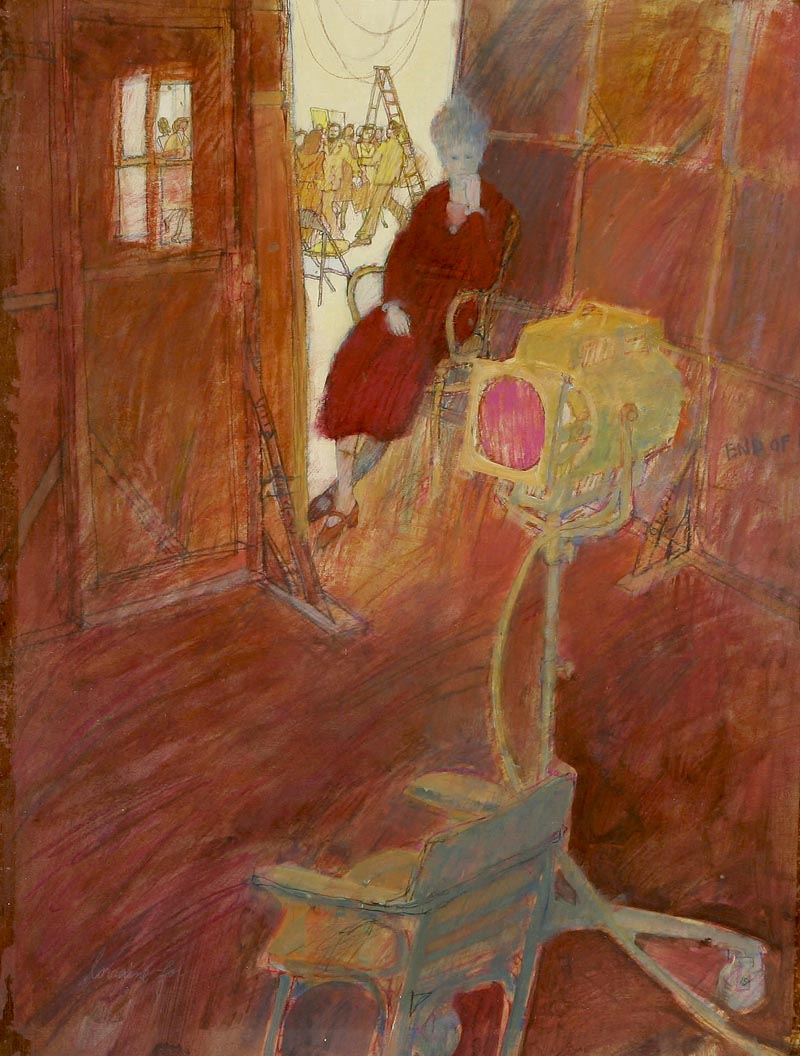
The difference between painting and illustration is this: An illustration must be specifically related to the story - you have to make the boy, the dog, the Santa Claus and the angel in the copy.
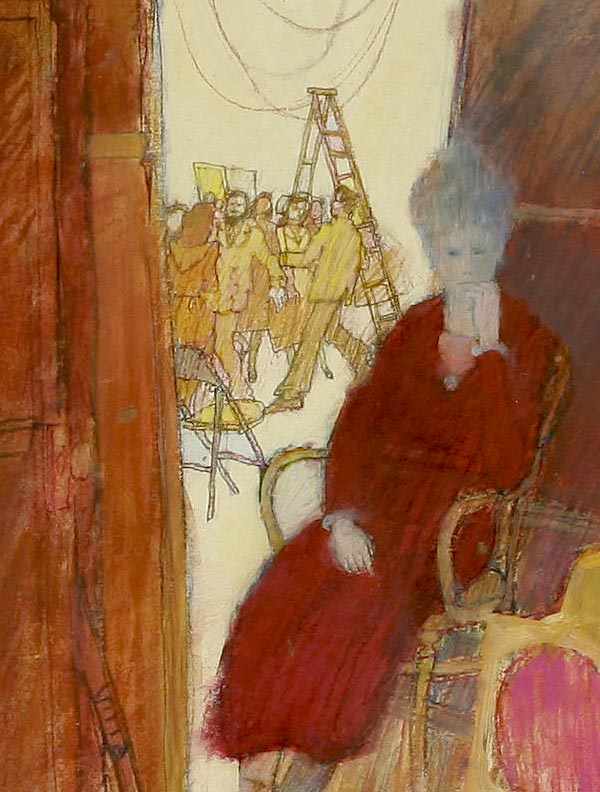
In painting, the ideas are related to your personal imagination. The ideal thing would be to have them use my paintings as illustrations.
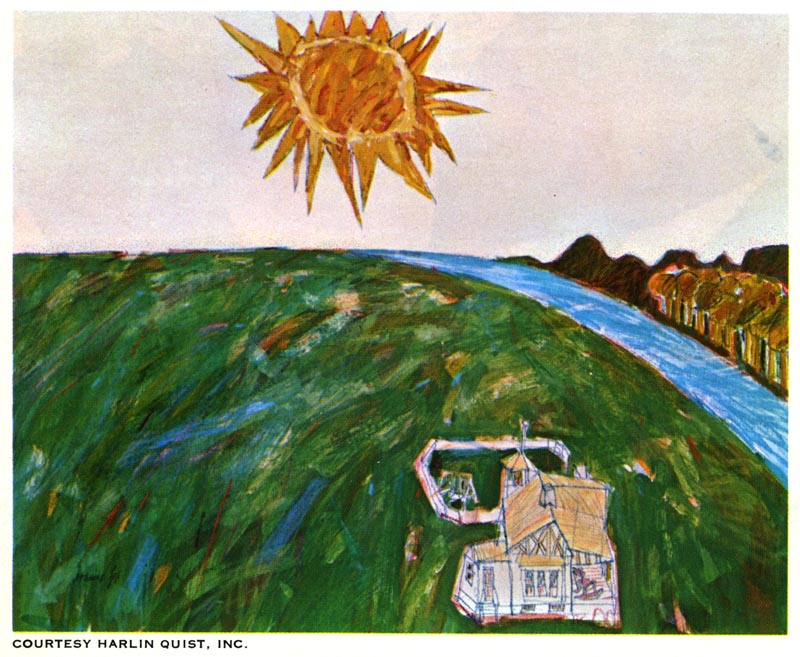
FA: The need to stay contemporary, "with it," is so important for the artist who wants to reflect his time. Do you find that teaching helps you keep in touch with what's happening? Do you get something from your young students?

Fox: Once you begin to find out what you are all about, the young don't influence you that much.
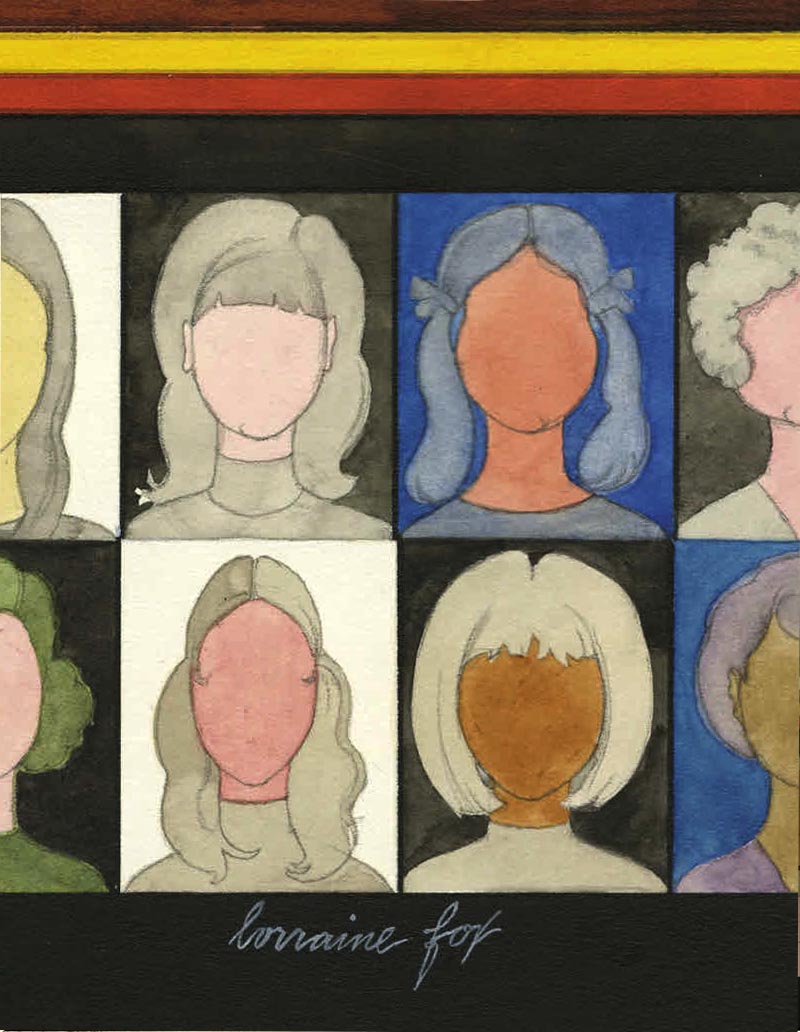
If you're in touch, if you are curious and inquisitive, you're bound to be in tune. I happen to have that kind of instinct and so does my husband.
FA: You have advised students to understand their own character. For example, you ask them, "Are you fastidious or sloppy? Do you have a tendency to line things up neatly or let them fall to chaos around you?" What about your character? Do you like to line things up?
Fox: I think I do but I'm kind of sloppy, which I like. After the painting classes I decided that I just couldn't cope with the neatness. I guess I'm still neat, though, maybe semi-neat. I think there is a basic rigidity in me and it does come out. The reason I'm able to say this is that my husband is not. I'm able to get a clearer picture of me looking at him.
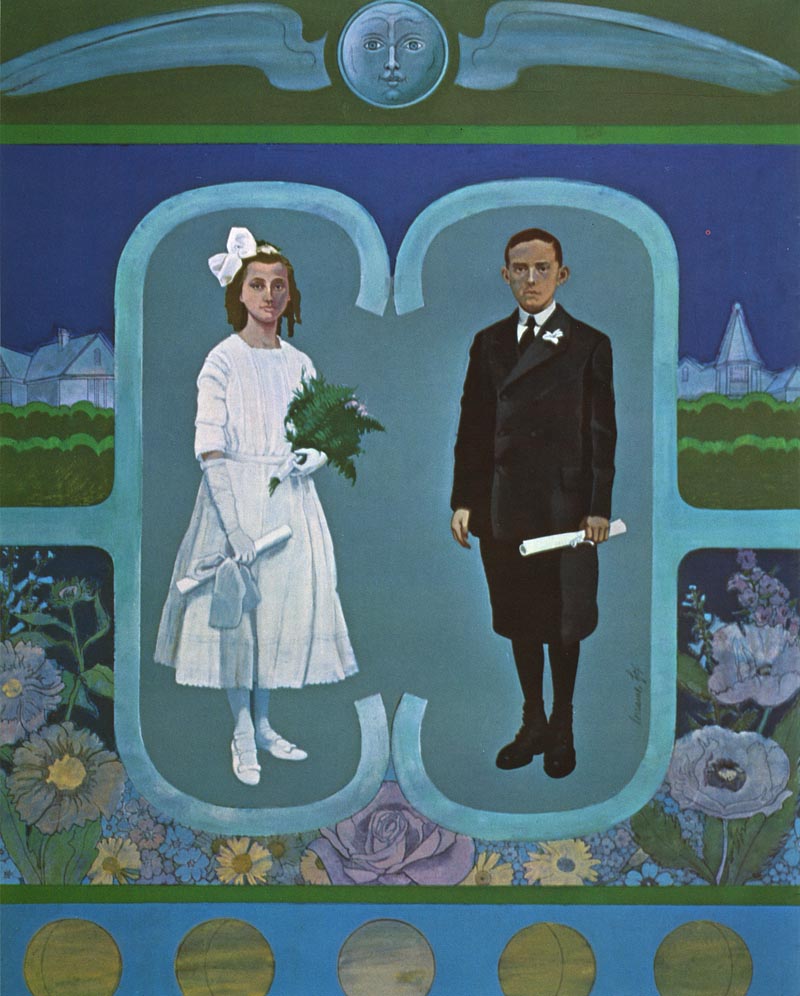
Everything is relative.
* Concluded tomorrow.
* Many thanks to Matt Dicke for providing the scans of the Lorraine Fox interview pages from the Winter 1967 issue of Famous Artists magazine being presented this week. Thanks to Heritage Auctions for allowing me to use scans from their archives.
So, the problem is this.The fine artists I know address the idea they want to express and their 'style' emerges from that. i have the feeling that Fox still had an illustrator mindset and was looking for a style to pursue and then deal with her subject matter/commision in that style.
ReplyDeleteBecause for all the soul-searching she has gone thru, her work still has that distinctive late 60s feel and look and the 'personal response' ethos was also part of the style.A kind of watered down Ben Shahn with a stick on social conscience seemed to become the commodity on sale.
What you get with her husband is a value for money, top of the bill picture maker with no pretensions.I find that a lot more honest.
It may even be that LF pursued this avenue knowing that she would never be in the class of D'Andrea and on some level was trying to find a way to avoid unfavorable comparisons.
But, as I said yesterday, it's only my opinion.
I don't get from Fox what you get, Remo, but as you say, it's just your opinion and your opinion is welcome. Thanks for taking the time to express it.
ReplyDeleteFor me, Fox or any other artist engaged in the endless search for personal artistic growth has something of value to share. Throughout the interview she references her own struggle: "Why can't I be more of an artist?" "I wanted to learn to draw better," "It was never quite right - quite where it should have been. I wasn't really ready." "I'm not this big a deal," "I have a hell of a lot to learn."
Her frank admissions - her awareness of her own shortcomings - that's what I feel Lorraine Fox has that's of real value to all of us. Whether you or I happen to like the results of her efforts to develop a mature, distinct personal style is, in my opinion, inconsequential. She is offering us something far more important and meaningful than that. I think her closing remarks in today's final post reinforce that valuable message.
I 100% agree with that Leif. I applaud her honesty and her desire to try to grow as an artist, and I think in this respect her example is one to be followed.
ReplyDeleteOn the general point of this merging of fine art with illustration, I haven't seen too many examples where I've liked the end product,whereas instincively I always feel a frisson of excitement when faced with something by Peak in his technicolor prime or Fawcett's dazzling powers of observation or Briggs' sinewy line-work etc etc.
But thanks for a stimulating look at an artist's quest for self-knowledge.